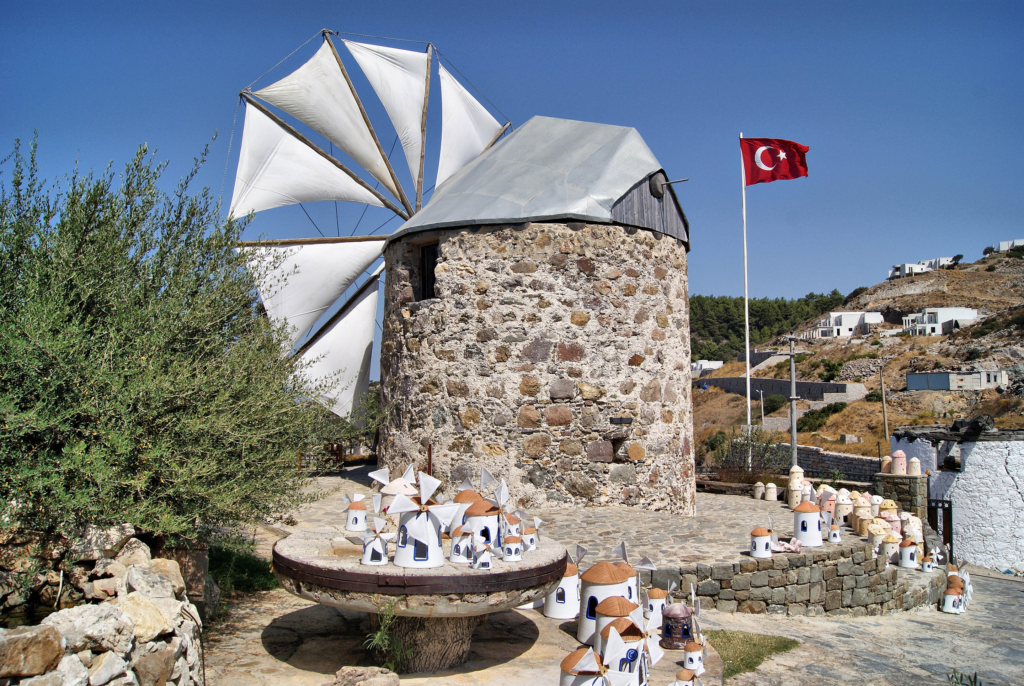
Wind power generates about 10% of Turkey’s electricity, mainly in the west in the Aegean and Marmara regions, and is gradually becoming a larger share of renewable energy in the country. As of 2022 Turkey has 11 gigawatts (GW) of wind turbines.[1] The Energy Ministry plans to have another 10 GW installed in the 2020s,[2] but the International Energy Agency says that is not enough,[3] and there is techno-economic potential for much more.[3]
The state-owned Electricity Generation Company (EÜAŞ) has about 20% of the market,[4] and there are many private companies.[5] The highest ever daily share of wind was 25%, in 2022.[6]
Building new wind farms is cheaper than running existing coal plants which depend on imported coal.[7] According to modelling by Carbon Tracker, new wind will be cheaper than all existing coal plants by 2027.[8][9]

In 2017, the Ministry of Energy and Natural Resources launched a US$1 billion wind power investment project, and issued a request for tender. The project, titled YEKA, was for wind farms in five different regions in the country with a total power capacity of 1 GW and at least 3 TWh energy generated annually,[61] an extra 1% of electricity in Turkey.
The German-Turkish consortium of Siemens-Türkerler-Kalyon bid lowest at US$34.8 per MWh. The consortium is carrying out research and development, for ten years, on wind turbine blades, generator design, material technologies and production techniques, software and innovative gearboxes. The R&D is done by fifty technical personnel, 80% of whom are Turkish engineers, with a budget of US$5 million per year.[61]
In 2019, the second 1 GW tender was won for four equal capacity projects in Balıkesir, Çanakkale, Aydın and Muğla, which are all provinces on the west coast.[62] The same year the European Bank for Reconstruction and Development invested US$100 million in wind and solar power in Turkey.[63] As of 2020 auction prices were around US$40 per MWh.[64] Think tank Ember say that energy policy should be changed to auction for far more solar and wind power.[60]
Since April 2022 low-cost generators such as wind have had their wholesale prices capped (this does not affect unlicensed and FiT): this can be considered a type of windfall tax.[60] As of 2022 it is unclear whether the money will be a general tax or will be used to subsidize high-cost generators such as gas.[60]
Merchant projects have won licenses with negative bids (meaning the companies pay the government for licenses) and are expected to come online in the mid-2020s.[65]
Some of the earliest windmills were built 400 years ago out of stone.[10] Using wind from the Aegean Sea,[11] these mills were used to grind wheat into flour until the 1970s. On windy days a mill could grind 20 sacks of wheat (about 320 kg) in an hour, and corn and barley were also milled.[12] Such historic windmills on the Bodrum Peninsula are being restored for tourism.[13][12] Likewise, on Bozcaada, two derelict mills have been reconstructed and are used for tourist demonstrations.[14]
- Aliağa Wind Farm is an onshore wind power plant in Aliağa district of İzmir Province in western Turkey.
- The wind farm consists of four fields operated by different companies.
- A total of 83 wind turbines have an installed output power of 193 MW generating about 480 GWh a year.[27]
The first wind farm was built in Izmir in 1998.[15] While the installed capacity of wind power was 19 megawatts (MW) in 2006, it grew to 140 MW by 2007, and to over 1,600 MW by 2011. In the 2010s some windpower was used for carbon offsets.[16]
- Aliağa Wind Farm is an onshore wind power plant in Aliağa district of İzmir Province in western Turkey.
- The wind farm consists of four fields operated by different companies.
- A total of 83 wind turbines have an installed output power of 193 MW generating about 480 GWh a year.[27]
A wind turbine factory was completed in 2019, also in İzmir.[17]: 57 In 2020 1.6 billion euros were invested in wind power.[18] Hybrid generation became more popular in the early 2020s.[19]
